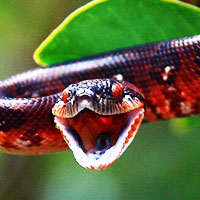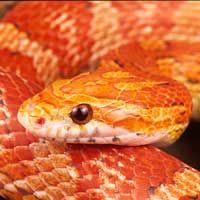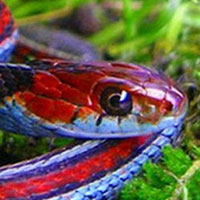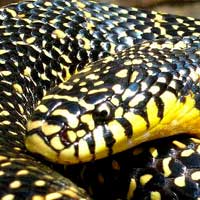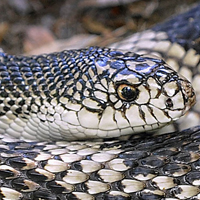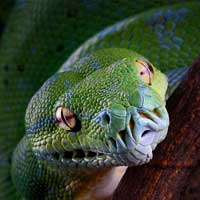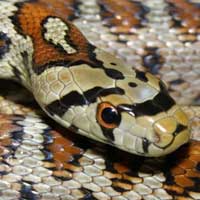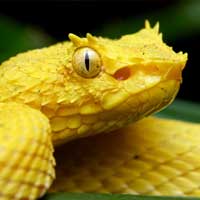The Inland Taipan: A Guide to the World's Most Venomous Snake
The Inland Taipan (Oxyuranus microlepidotus) belongs to the Elapidae snake family, characterized by its highly venomous species with fixed front fangs and potent neurotoxic venom, making it the most venomous snake in the world, adapted to thrive in the arid and semi-arid regions of central Australia.
Scientific Name: Oxyuranus microlepidotus
Snake Family: Elapidae
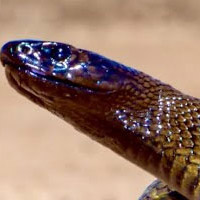
An Overview of the Inland Taipan
The Inland Taipan (Oxyuranus microlepidotus), also known as the "fierce snake," holds the title of the most venomous snake in the world. Native to Australia's arid regions, this elusive and reclusive species delivers a venom potent enough to kill hundreds of humans with a single bite. Despite its fearsome reputation, the Inland Taipan is not aggressive and rarely encountered in the wild.
Where Does the Inland Taipan Live?
The Inland Taipan inhabits the dry, arid regions of central Australia. Key habitat characteristics include:
- Geographic Range: Found in the semi-arid areas of Queensland, South Australia, and the Northern Territory.
- Preferred Terrain: Clay plains and cracking-soil regions that provide cover and shelter.
- Climate: Adapts to extremely dry climates with high temperatures during the day and cooler nights.
Below is a summary of the Inland Taipan’s habitat preferences:
| Habitat Feature | Description |
|---|---|
| Geographic Range | Central Australia |
| Preferred Terrain | Clay plains, soil cracks |
| Climate | Arid and semi-arid |
What Does the Inland Taipan Eat?
The Inland Taipan is a specialist predator, primarily feeding on small mammals. Key dietary details include:
- Primary Prey: Native rats and other small mammals found in its arid habitat.
- Hunting Strategy: Delivers a series of rapid strikes to immobilize prey using its highly toxic venom.
- Feeding Behavior: Consumes prey whole, often retreating to a secure area to digest.
This snake’s specialized diet helps it thrive in areas where food resources are scarce, maintaining ecological balance by controlling rodent populations.
Understanding the Behavior of the Inland Taipan
The Inland Taipan is a shy and reclusive species. Key behavioral traits include:
- Activity Pattern: Diurnal during cooler months and crepuscular during hotter seasons.
- Defensive Behavior: Avoids confrontation and will retreat if possible; strikes only when threatened.
- Social Behavior: Solitary, interacting with others only during mating season.
Despite its deadly venom, the Inland Taipan is non-aggressive and poses minimal threat to humans when left undisturbed.
Health and Lifespan of the Inland Taipan
The Inland Taipan has a relatively long lifespan and is well-adapted to its harsh environment. Important health considerations include:
- Lifespan: 10-15 years in the wild, with individuals in captivity often living longer.
- Health Risks: Susceptible to habitat destruction and competition for limited resources.
- Predators: Birds of prey and larger reptiles pose risks, especially to juveniles.
Proper care in captivity, including regular veterinary check-ups and a controlled environment, ensures the Inland Taipan remains healthy.
How Does the Inland Taipan Reproduce?
The Inland Taipan follows a reproductive cycle adapted to its harsh environment. Key details include:
- Mating Season: Typically occurs in late winter and early spring.
- Reproductive Method: Oviparous, laying eggs that incubate in warm, secure areas.
- Clutch Size: Typically 10-20 eggs, depending on the size and health of the female.
- Hatchling Behavior: Juveniles are independent and venomous from birth.
The Inland Taipan’s reproductive success is closely tied to favorable environmental conditions and the availability of food for hatchlings.
Safety Guidelines for Handling the Inland Taipan
Handling the Inland Taipan is a task reserved for experts. Key safety measures include:
- Use appropriate tools, such as snake hooks and secure enclosures.
- Wear protective gloves and boots to minimize risks.
- Ensure enclosures mimic the snake’s natural environment and are escape-proof.
- Keep antivenom readily available and know emergency protocols.
Only trained professionals should handle this species to ensure safety and proper care for the snake.
Disclaimer
The information provided in this article is for educational purposes only. SnakeEstate strongly advises against handling or interacting with venomous snakes, such as the Inland Taipan, unless you are a trained and licensed professional. These snakes pose significant risks, and improper handling can result in serious injury or death. Always adhere to local regulations and prioritize safety when dealing with wildlife.
